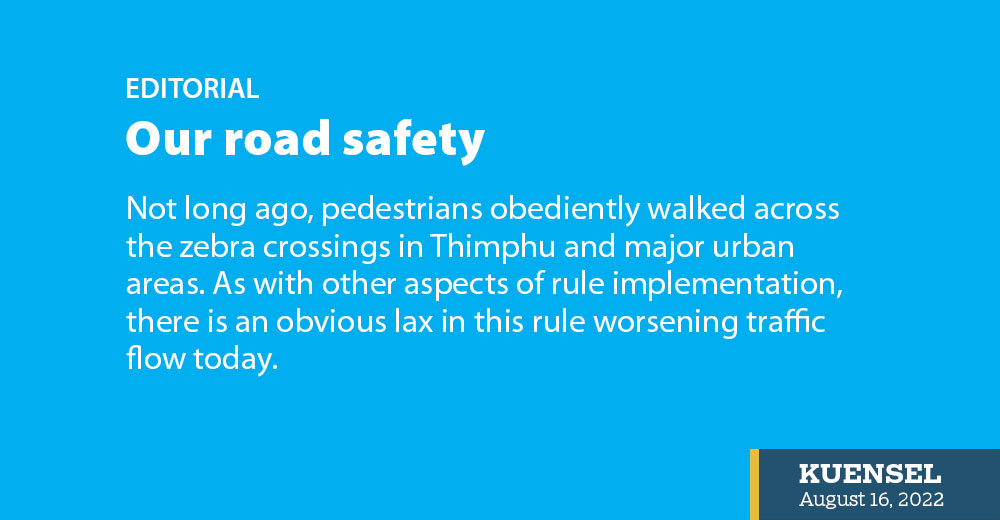Not long ago, pedestrians obediently walked across the zebra crossings in Thimphu and major urban areas. As with other aspects of rule implementation, there is an obvious lax in this rule worsening traffic flow today.
Every day office-goers and students face the same problems.
It is a continuous waking-up process. We’ve now realised that when motor vehicle traffic becomes very congested, we need rules and we need drivers who know the rules. More than that we need them to obey the rules.
As it is the proportion of cars on the road length is not planned. The volume of vehicles is driven by status, flexible loan schemes, and the needs of the urban population. The road length is limited by a lack of funds and capability. Pedestrian traffic, notably school-going children, has also increased manifold.
The statistics are worrying. Globally, road traffic injuries is the leading cause of death for children and young adults aged 5-29 years and about 1.3 million people die each year as a result of road traffic crashes. UN figures show that 93 percent of the world’s fatalities on the roads occur in low and middle-income countries.
There are serious economic and social implications of random traffic. Road traffic crashes cost most countries three percent of their gross domestic product.
Bhutan’s current road crash fatality rate stands at 6.3 per 10,000 vehicles. Between 2010 and last year, 1,151 people lost their lives due to road accidents and 6,512 were injured.
So, what do we do?
The RSTA has already initiated more strict rules for new drivers, especially for public transport. But it is not just new drivers that need to be controlled because many old drivers are not any better acclimatised to driving rules. Tough criteria are necessary when we are licensing people to take their own and others’ lives into their hands.
Rules should extend beyond the licensing office to our roads. We need clear traffic signals to direct city traffic as well as road signs including zebra crossings, dividers, parking systems, and traffic flow.
In Bhutan, we cannot blame pedestrians for traffic congestion. Most people have no choice but to walk and a large majority of the pedestrians are either youth or farmers.
At the same time, the average profile of the motorist is becoming younger and more reckless and, according to police records, drink-driving is on the increase.
Sources say police patrolling last Friday in Thimphu booked many drivers collecting thousands in fines for drink-driving.
What is more important, therefore, is the practical enforcement of the rules. And the only way to do that is to have more vigilant traffic policemen and volunteers patrolling the streets and tougher penalties for violators.
The challenge is: can we solve the problem that we have created?


